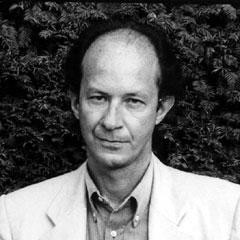4TH LECTURE AT THE GRAMSCI MONUMENT, THE BRONX, NYC: 4TH JULY 2013 ART BETWEEN IMMANENCE AND TRANSCENDENCE MARCUS STEINWEG

Giorgio Agamben
In a commentary on Deleuze’s last essay, “L’immanence: une vie” (1995), Giorgio Agamben arrives at the following diagrammatic conclusio, which schematizes a certain sequence in modern philosophy:
TRANSCENDENCE IMMANENCE
Kant Spinoza
Husserl Nietzsche
Heidegger
Lévinas, Derrida Foucault, Deleuze
It is correct, of course, to distinguish, as Agamben does, between a “line of immanence” and one “of transcendence.” It is equally correct to have the two lines cross, not like parallels that meet in infinity, nor only in “Heidegger,” who limns the figure of an enigmatic chiasm, as the site of an intersection of transcendence and immanence. It is already true of Spinoza, of Kant, of Nietzsche, of Husserl, of Lévinas, of Derrida, of Foucault and Deleuze that they represent such intersections, that their thinking represents an embracing of transcendence and immanence, though we must know that this brace their thinking represents, like the brace it reflects, is equally connecting and separating. Spinoza’s one substance divides into natura naturans and natura naturata, into creative and created nature; Kant’s world shatters into a noumenal and a phenomenal sphere; Nietzsche’s reality knows no world-behind-the-world but the difference between Apollonian homogeneity and Dionysian groundlessness; Husserl, finally, opens up to the kinaesthetic body and the presence of the other in the perspective of phenomenological immanence; Lévinas addresses the wholly other (tout autre) in the immanentic here and now; Derrida inquires into the indeconstructible (justice, etc.) within the horizon of a deconstruction that seizes everything; Foucault directs his thinking to the unthinkable unthought; Deleuze distinguishes between history/ historia and transhistoric becoming.
Each one of these thinkers opens immanence within itself. Not in order to join the thinking of transcendence the onthotheological tradition (if the latter ever existed as a uniform and unified tradition) has handed down, but in order to complicate its alternative, the immanentism of the finite, by supplying an element of integral infinity, i.e., implicit transcendence. To open up to this infinity and transcendence does not mean to resurrect God or an absolute subject. It means to challenge the absolutization of a given transcendence as much as the immanentism that absolutizes itself, by letting it border on its outside, which we can call transcendence, as long as that word marks not a reality but the brittleness of the consistency-zone reality.
